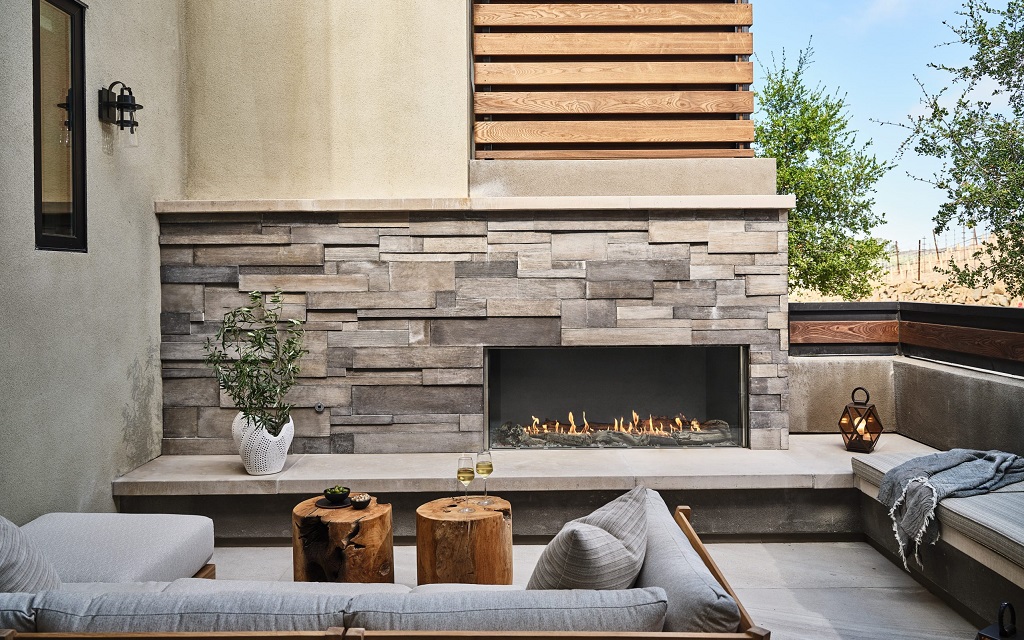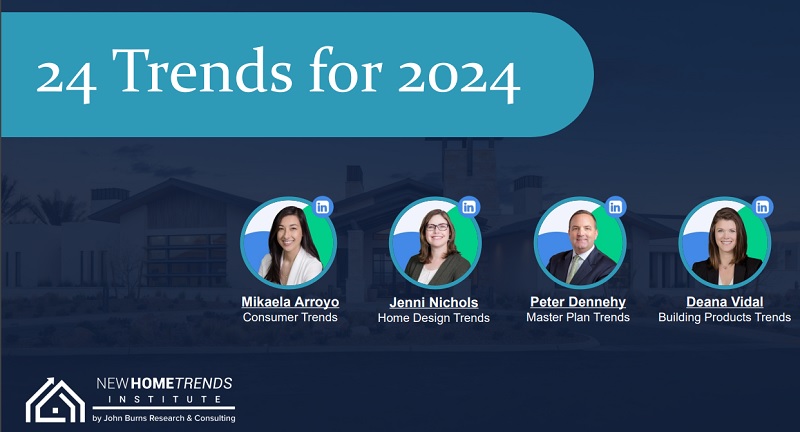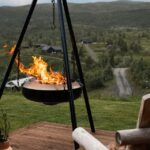Staying abreast of housing trends is an important responsibility for all homeowners and especially for prospective homebuyers. Being able to own a home that’s built, maintained and enhanced with the future in mind is critical for ensuring long-term investment value, as well as overall satisfaction of ownership.
The New Home Trends Institute (NHTI), in partnership with the CBIA (California Building Industry Association), recently shared their 24 Housing Trends for 2024 in webinar format. The topics and trends explored were many, and often interrelated, spanning: consumer preferences, home design, master-planned communities, building products, aging, outdoor amenities, wellness programs, and much more.
This article includes a summary of the trends discussed, with insights, examples and images, plus trends not included that we expect to see adopted in coming years.
Table of Contents
- How the 24 Housing Trends Were Grouped & Categorized
- The 24 Trends in Numerical Order
- The 24 Trends Grouped by Primary Industry Topic
- Trends Not Mentioned We Hope to See in the Future
- About The 24 for 2024 Trends Report & The New Home Trends Institute
Also see:
How the Trends were Grouped & Categorized
NHTI presented their 24 trends into five inter-related macro-trends:
- Gloomier Market Dynamics
- Monthly Payment Reduction
- Smart Savings
- Smart Selling
- Fostering Emotional Fulfillment
As part of an annual tradition, the last trend listed (AKA Trend 24) is a culturally playful theme that encapsulates an especially intriguing emerging phenomena.
Each trend was also categorized into one of NHTI’s four primary research areas, each covered by an individual industry analyst:
NHTI’s 24 Trends in 2024 Listed in Numerical Order
Gloomier Market Dynamics
Trends 01-05 are related to a trickier housing market due to gloomier economic conditions and consumers pulling back on spending due to multifacted financial challenges.
(NOTE: NHTI’s official title for this group of trends was “Market Dynamics“. We prepended the clarifying word “Gloomier” to convey that the overall market dynamics are becoming increasingly more challenging.)
- 01 Tempered Splurges
- 02 Projects in Smaller Portions
- 03 Land Crunch
- 04 Resilient Design Gains a New Ally
- 05 The “Haves” Thrive
01 Tempered Splurges
Consumers are spending less as they are having to deal with several financial challenges at once:
- Inflation
- Less Savings
- More Consumer Debt (Student, Auto, Credit Card)
- Slowing Job Market & Wage Increases
Purgula’s Take: Though homeowners need to be resourceful during any market climate, when spending becomes tight, homeowners are forced into action. Besides focusing on cost-savings, we expect to see more entrepreneurial homeowners explore a wider-range of ways to monetize their homes. Homeowner focus on DIY skills, transformable design, and preventative home maintenance will also grow in importance.
Trend Category: Market Dynamics
Industry Topic: Consumer Trends
Related Trends: Home Monetization | ADUs | DIY | Free Resources
02 Projects in Smaller Portions
Instead of undertaking a large renovation or remodeling project all at once, consumers are choosing to break projects into smaller components and phases.
Purgula’s Take: When the budgets are insufficient for the task at hand, homeowners should seek to work with contractors that can offer phased project plans in order to spread finances over longer periods of time. Having prospective contractors suggest cost-saving options is another effective way to discover ways to deliver more from your budget.
Trend Category: Market Dynamics
Industry Topic: Building Products
Related Trends: Transformable Design
Also see: Renovations | Renovation Contracts | How to Hire a Contractor
03 Land Crunch
A lack of developed land is further compounding housing attainability issues. Many residential real estate developers are shying away from purchasing undeveloped land due to market uncertainty and overall risks. However, there is market opportunity for smaller-scale housing developments.
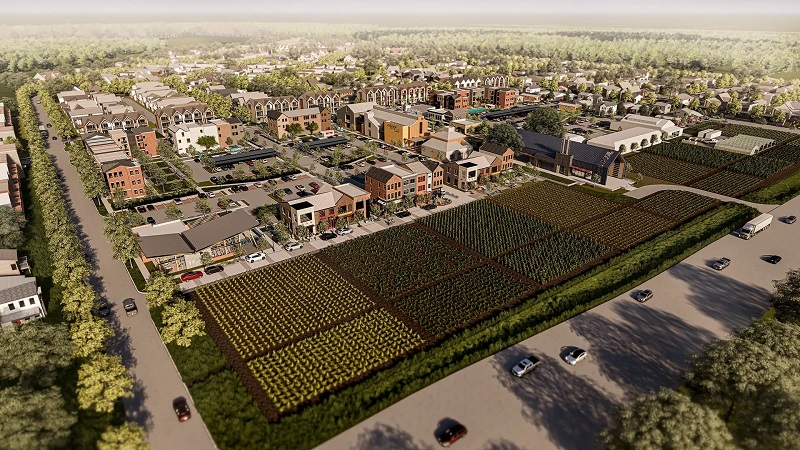
Rendering of Indigo Community Commons and Urban Farm Vision
Example:
- Indigo with Meristem Communities, Richmond, Texas
Purgula’s Take: We expect to see an emerging generation of first-time homeowners that will start to buy land as an initial step towards homeownership, followed by utilizing innovative prefab/modular home construction methods, in less-populated areas that are more affordable. A land-first approach will be well-suited for households with stable work-from-home sources of income.
Trend Category: Market Dynamics
Industry Topic: Master-Planned Communities
Related Trends: Work From Home | ADUs | Prefab-Modular Construction | Land Ownership
Also see: How to Buy Land
04 Resilient Design Gains a New Ally
Rising insurance premiums and insurers leaving select markets are an increasing concern among existing homeowners and prospective homebuyers.
Examples:
- More Floridians are relocating to the center of the state in an attempt to avoid hurricanes and high insurance premiums
- More architects are looking for designs that incorporate disaster resistant features, such as:
- Fire Resistance/Fire Safety
- Storm/Extreme Weather Resilience
- Flood Resilience
Purgula’s Take: We expect to see more homeowners counter cancelled insurance policies and rising insurance rates with safe, more resilient home construction features. We also expect to see more attention paid to natural risk assessments in the homebuying process (e.g. fire, flood, wind, hurricane, soil, trees, etc.).
Trend Category: Market Dynamics
Industry Topic: Building Products
Related Trends: Disaster Resistant Construction | Storm Resistant Roofs | Home Safety & Protection | Firescaping
Also see:
05 The “Haves” Thrive
Surging home and stock values are creating massive wealth for homeowners fortunate enough to benefit directly or via inheritance and gifts.
Purgula’s Take: Witnessing and envying the accumulated wealth of long-time homeowners, first-time homebuyers are prone to over pay for inferior housing stock as a desperate method of entering the housing market. We expect to see more financially disciplined first-time homebuyers approach their first homes in similar fashion as startup companies – starting modestly with affordable land and scalable construction methods that can be developed and upgraded over time.
Trend Category: Market Dynamics
Industry Topic: Consumer Trends
Related Trends: Co-Homeownership | Zero Lot Line Homes | Land | Prefab-Modular Construction | Work-From-Home Households | Multigenerational Living
Also see:
Monthly Payment Reduction
Trends 06-09 pertain to making homes more attainable, such as striving to simplify homes (e.g. reduced square footage; fewer, smaller windows; boxy designs; elimination of traditionally dedicated spaces, such as dining rooms, basements and garages; etc.). Trend 09 is an exciting new trend where a few innovative home builders are offering options for homebuyers to have rental-ready ADUs to be able to purchase more home or reduce their monthly net housing expenditures.
- 06 Spec Level Finds a Floor
- 07 From Simplifying to Completely Removing
- 08 Mortgage Rate Smackdown
- 09 ADUs – Beyond Multigenerational
06 Spec Level Finds a Floor
Home designers and builders have virtually hit bottom in terms of eliminating unnecessary features and amenities in efforts to make new homes more affordable. Builders are now having to find other ways to reduce monthly payments.
Trend Category: Monthly Payment Reduction
Industry Topic: Building Products
Related Trends: Transformable Design | Zero Lot Line Homes | Multigenerational Living | Co-Homeownership
07 From Simplifying to Completely Removing
To keep costs down, builders and architects have been continuing to simplify homes — from limiting the number and size of windows to making homes boxier. Now they are taking this concept a step further by removing traditional parts of the home, such as formal dining rooms, basements, and even garages.
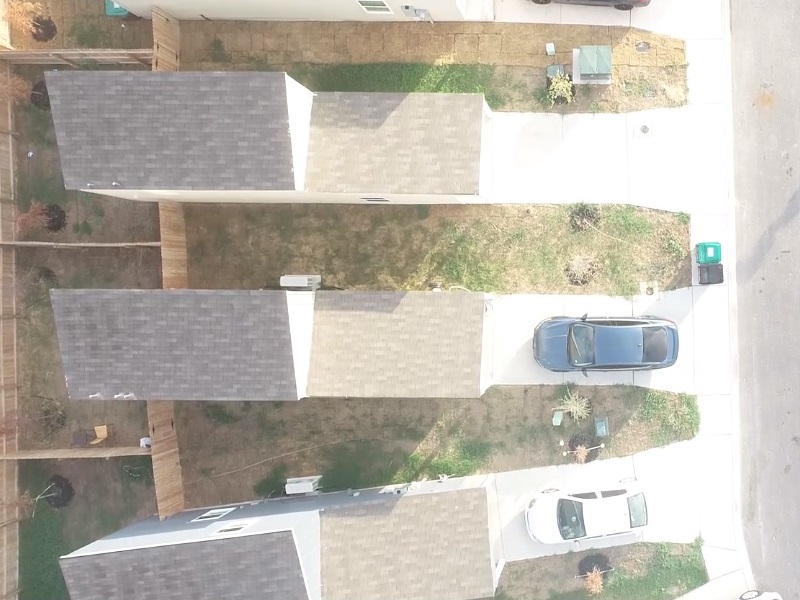
Aerial drone view of Elm Trails, a Lennar Community in San Antonio, Texas
Purgula’s Take: The 661 square foot unit currently being offered at Elm Trails in San Antonio, should be marketed as either a “tiny house” or “similar to a detached condo with yard” so that prospective buyers understand upfront that this is an unusually small home, by traditional detached-home standards. The beauty of small home layouts, however, is that designers have to be absolutely focused on prioritized features and maximized functionality.
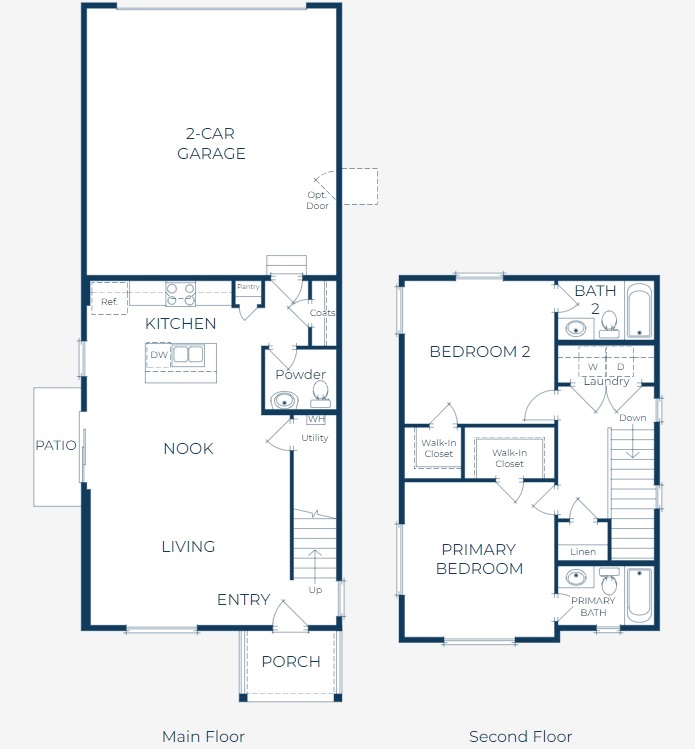
Painted Prairie Floor Plan
Examples:
- Painted Prairie by Berkeley Homes, Aurora, Colorado
- Elm Trails by Lennar, San Antonio, Texas
Trend Category: Monthly Payment Reduction
Industry Topic: Home Design
Related Trends: Transformable Design | Decluttering | Tiny Homes
08 Mortgage Rate Smackdown
Deal hunting for artificially lower mortgage rates will continue, favoring large public home builders. If rates continue to rise, builders may refrain from buying down rates into the 5 percent range due to seller contribution caps and being very costly. Builders may buy down rates starting with 6 percent, and buyers will become more accustomed to 6%+ as an acceptable rate.
Trend Category: Monthly Payment Reduction
Industry Topic: Consumer Trends
Also see:
09 ADUs – Beyond Multigenerational
Instead of solely focusing on multigenerational layouts, more builders are offering the option to create a rental ADU (Accessory Dwelling Unit) as part of a new home, with the presumption that supplemental rental income will make home purchases more affordable. In fact, potential rental income can be factored in to help prospective buyers qualify for a loan.
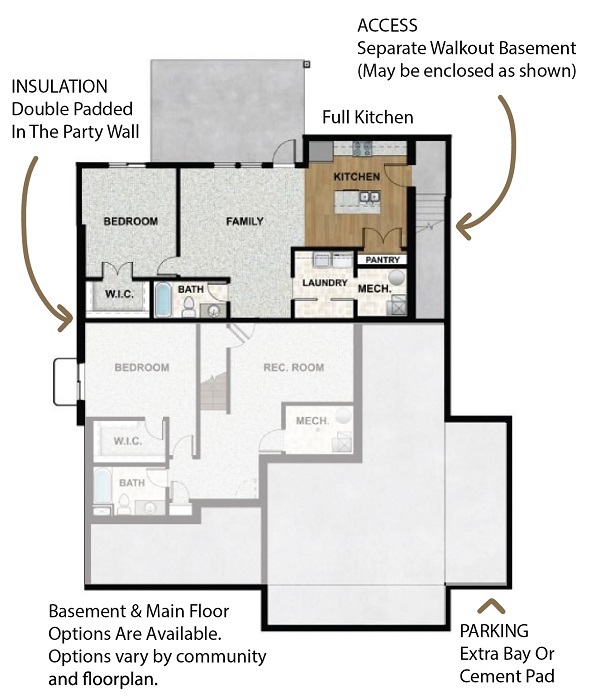
Fieldston Sage Floor Plan with ADU rental suite
Examples of innovative ADU offerings cited:
- FieldStone Homes, the ADU option is available at three communities in Utah
- Tribute at Lyric by Shea Homes, Lone Tree, Colorado
Rental Suites at Fieldstone Homes | What is a Rental Suite / ADU?
Purgula’s Take: This is really exciting news as ADUs are a terrific way to build in long-term flexibility by having an invaluable resource for several critical uses over many years, e.g.: rental income; home offices; multigenerational living; lodging for on-site healthcare workers; home fitness centers; etc. Though we would not recommend taking on a loan amount that requires supplemental rental income to qualify, the ability to have a ready-made rental unit is certainly a valuable financial safety net to have.
Trend Category: Monthly Payment Reduction
Industry Topic: Home Design
Related Trends: Home Monetization | Rental Income | Work from Home | Aging In Place | Transformable Design
Also see: ADUs | Multigenerational Living
Smart Savings
Trends 10-14 are related to creative ways that home builders, designers, master-planned communities, HOAs and remodelers are taking to save on costs (and space) without reducing quality.
- 10 Partnerships with Outside Entities
- 11 Home Builders Rethink Their Design Center Strategy
- 12 Easy-to-Install Materials Will Win
- 13 Bells and Whistles Take a Back Seat
- 14 Rethinking the Kitchen Island
10 Partnerships with Outside Entities
Master-planned/HOA communities are addressing reduced functionality and space within homes, by offering prioritized in-demand community features. In tandem, they are also being cost-conscious on the offered amenities, by incorporating operating efficiencies and expertise from well-suited partners.
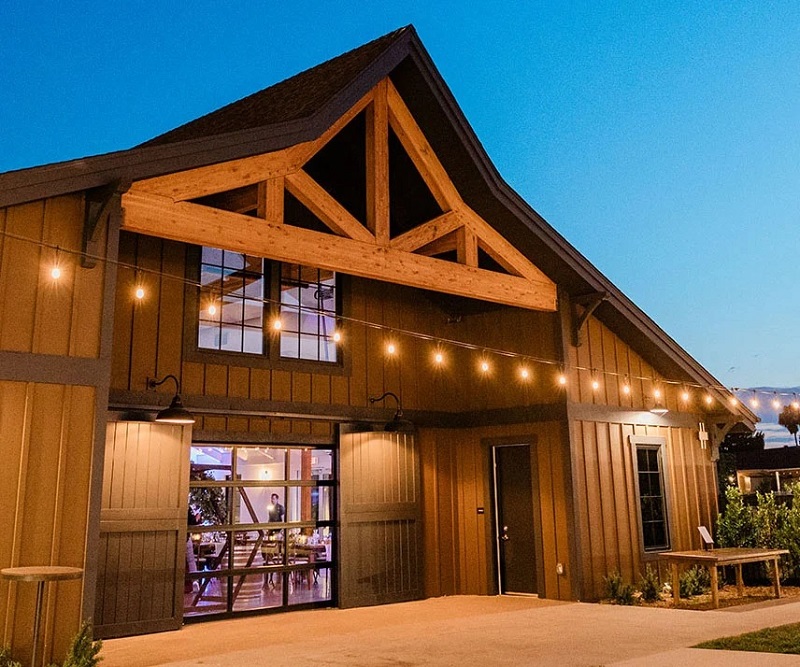
Canopy Grove on-site wedding venue
Examples of innovative community benefits via partnerships include:
- Preferred Cable & Wi-Fi Pricing: Invitation Homes
- On-Site Wedding Venue: Lennar’s Canopy Grove & Wedgewood Weddings
- On-Site Winery: Messina Hof Harvest Green Winery & Kitchen
Purgula’s Take: Two of the examples provided really caught our attention (the Wedding Venue and the Winery), as they represent a new opportunity for HOA neighborhoods: Community Monetization. Though we have written about various ways that homeowners can individually monetize their homes, we have not yet explored ways for HOA communities to create recurring revenue streams that can be used to cover ongoing operating costs, as well as major maintenance expenditures. We hope other master-planned communities will follow this innovative lead with the goal of reducing the overall cost of ownership for homeowners.
Additionally, we agree with this general approach as well-planned and managed communities can offer intangible benefits, including safety and convenience that will bode well for home values and desirability. However, HOAs of master-planned communities should also look for ways to leverage their collective buying power to make maintaining and upgrading homes easier and more cost-effective (e.g. preferred rates with vetted reputable contractors and suppliers).
Astute homebuyers still need to look into the operating costs of HOAs, as well as their CC&Rs to protect themselves from rising operating costs and unexpected maintenance fees, as well as onerous restrictions. We also expect to see market pushback against HOAs in general, such as increasing demands for transparency and responsible cost management to outright elimination of certain corrupt and incompetent boards.
Trend Category: Smart Savings
Industry Topic: Master-Planned Communities
Related Trends: Monetization
11 Home Builders Rethink Their Design Center Strategy
More builders are using interactive and virtual tools to simplify the design and feature selection process. A key goal is to provide sufficient personalization options with convenient ways to understand associated cost implications based on choices.
Examples:
Trend Category: Smart Savings
Industry Topic: Building Products
Related Trends: Transformable Design | Virtual Design | Virtual Tours
12 Easy-to-Install Materials Will Win
Products and design choices that require less labor to install, or are more versatile, will win market share. Home designers are willing to pay more for products that install easier, last longer, and are designed with easy maintenance in mind.
Purgula’s Take: There is a huge market opportunity for builders, contractors and suppliers to educate homeowners on new sustainable materials that look great, are durable and easy to maintain. Experienced homeowners understand the importance of investing in materials with these highly desirable traits.
Trend Category: Smart Savings
Industry Topic: Building Products
13 Bells and Whistles Take a Back Seat
Home designers are focusing on the big picture to pull consumers off the sidelines by providing the right spaces at the right prices.
Examples:
- Creekside at Shoreline by Woodside Homes, Syracuse, Utah
- Leyden Rock by Epic Homes, Arvada, Colorado (SOLD OUT)
Trend Category: Smart Savings
Industry Topic: Home Design
Related Trends: Transformable Design
14 Rethinking the Kitchen Island
More homeowners who are undertaking kitchen remodels are preferring large islands prioritized for prep and dining. This preference underscores the trend for more homeowners wanting eat-in kitchen area instead of space dedicated for a formal dining room. Some builders, such as Trumark Homes, however, are leaving the island open for homebuyers to choose their desired type of island and size.
Examples:
- Focus on Islands Among Top Design Trends, NKBA Reports
- Terra Collection, Tustin, California
- Flats & Towns at Covina Bowl, by Trumark Homes, Covina, California
Trend Category: Smart Savings
Industry Topic: Home Design
Related Trends: Kitchen Design | Transformable Design | Decluttering
Smart Selling
Trends 15-19 are related to the new approaches, tools and tactics that master-planned communities and home builders are incorporating with the overarching goal of resonating with contemporary homebuyers.
- 15 Relatability Rules
- 16 Welcome to Camp
- 17 Outdoor Recreation for All
- 18 New Search
- 19 AI Raises The Personalization Bar

Marketing illustration for Basecamp at Sunbridge, Florida
15 Relatability Rules
Marketers of new home developments are using more authentic content to promote their communities, including showcasing real residents in marketing materials. This is a trend away from using stock imagery with professional models.

Residents of Easton Park
Examples:
- Amblebrook at Gettysburg
- Easton Park, Austin, Texas
Trend Category: Smart Selling
Industry Topic: Consumer Trends
16 Welcome to Camp
Community developers are focusing more on wellness amenities, leaning heavily into “basecamp” theming that provides not just outdoor amenities, but direct access to wilderness-centric activities, such as hiking, biking, camping and more.

Outdoor trail at River Camp
The goal is to enable residents to balance hectic lifestyles with healthy, convenient connections to nature. Basecamp at Sunbridge in St. Cloud, Florida, for example, provides a combination of a camp-inspired information center and activity hub designed to give visitors an immersive outdoor experience.
Ranch Camp at the Village of Rienda
Examples:
- Basecamp at Sunbridge, St. Cloud, Florida
- River Camp at Wolf Ranch, Georgetown, Texas
- Ranch Camp at the Village of Rienda, Rancho Mission Viejo, California
- Base Camp, Sandpoint, Idaho
Trend Category: Smart Selling
Industry Topic: Master-Planned Communities
Related Trends: Home Wellness | Indoor-Outdoor Living | Safety & Protection | Biophilic Design
17 Outdoor Recreation for All
With trails and outdoor spaces consistently topping the list of most-desired amenities, community developers are allocating more resources to activate nature amenities, including 55+ communities.

Trail 340 at Victory at Verrado
Image courtesy of Brian Kuhlmann
Examples:
- Victory at Verrado, 55+ Community, Buckeye, Arizona
- Sunstone, includes a 55+ Neighborhood, Las Vegas, Nevada
Trend Category: Smart Selling
Industry Topic: Master-Planned Communities
Related Trends: Indoor-Outdoor Living | Sensory Gardens | Aging In Place
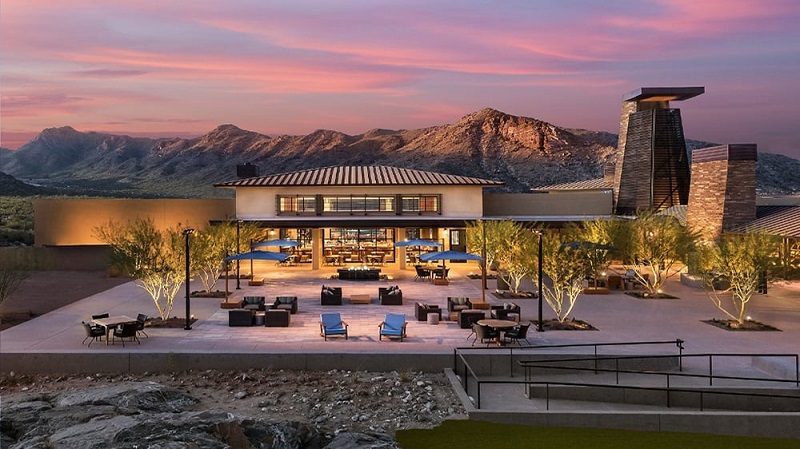
Victory Club Patio, Victory at Verrado
18 New Search
The way consumers are searching and vetting information continues to shift, which impacts how they find products and make purchase decisions. For example, US adults under the age of 30 now trust information from social media almost as much as from national news outlets.
Trend Category: Smart Selling
Industry Topic: Consumer Trends
19 AI Raises the Personalization Bar
Consumers increasingly expect personalized experiences tailored to their individual needs. In turn, businesses continue to leverage AI to deliver hyper-personalization.
Purgula’s Take: Though personalized service is always appreciated in most instances, businesses need to make sure that personalization is combined with intelligently understanding the needs of customers. Though trend #19 appears to pertain to homebuying, we expect to see a related macro-trend of homebuilders, contractors and manufacturers working together to leverage intelligent technology to build more reliable homes that are easier to manage, maintain and upgrade. Look for Digital Twins to serve as the intelligent hub of the future for operating and maintaining one’s home effectively and conveniently. Digital homes will encompass home databases (e.g. details on products, materials and systems, plus maintenance records), home analytics (e.g. energy usage, water usage, air quality, temperature, security access logs, etc.), while interacting with smart systems and appliances to provide automated/predictive/prescriptive maintenance capabilities.
Trend Category: Smart Selling
Industry Topic: Consumer Trends
Related Trends: Prescriptive Maintenance | Digital Twins | Home Automation
Fostering Emotional Fulfillment
Trends 20-24 are related to an evolving housing landscape that is becoming increasingly focused on consumer wellness, personal fulfillment and joy.
(NOTE: NHTI’s official title for this group of trends was “Fostering Fulfillment“. We added the clarifying word “Emotional“, to convey that these trends were not related to improving “business fulfillment” or “supply chains“.)
- 20 Product Innovation with Purpose
- 21 “Blue Zone” Mentality
- 22 Shared Experience
- 23 Selling Joy
- Trend 24: Barbenheimer IRL
20 Product Innovation with Purpose
Home brands are seamlessly embedding features into their products that align with their brand values, without requiring extra effort from the consumer.
Examples:
- IKEA’s Anchor and Unlock commitment to safety innovation
- Samsung’s plastic-reducing laundry filter
Trend Category: Fostering Fulfillment
Industry Topic: Building Products
21 “Blue Zone” Mentality
An increased spotlight on aging solutions is combining with a new understanding of what lengthens lifespan (see Blue Zones documentary on Netflix). Blue Zones are regions where people reach the age of 100 at rates 10 times greater than in the United States. In the housing industry, this trend is also being referred to as Age-Friendly Communities.
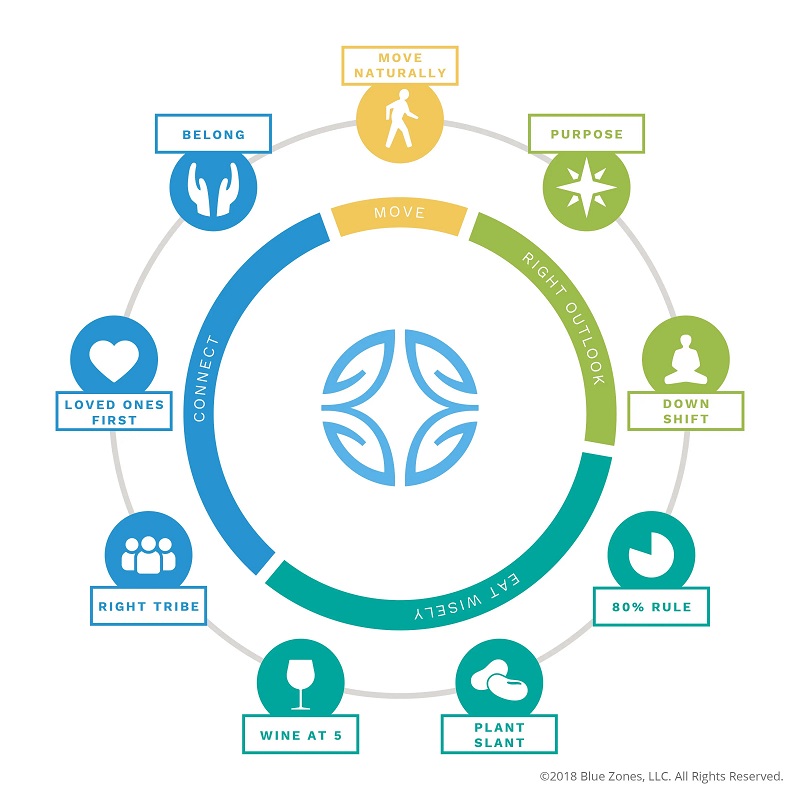
Image courtesy of Blue Zones LLC
Examples:
- Sonders Fort Collins, Colorado
- Esencia Farm at Rancho Mission Viejo, California
Trend Category: Fostering Fulfillment
Industry Topic: Master-Planned Communities
Related Trends: Aging In Place| Home Wellness | Multigenerational Living| Sensory Gardens
Also see:
22 Shared Experience
Consumers are seeking meaningful connection opportunities centered on shared values, interests, activities and hobbies. Technology is also being used in new home communities to help facilitate these well-targeted connections.
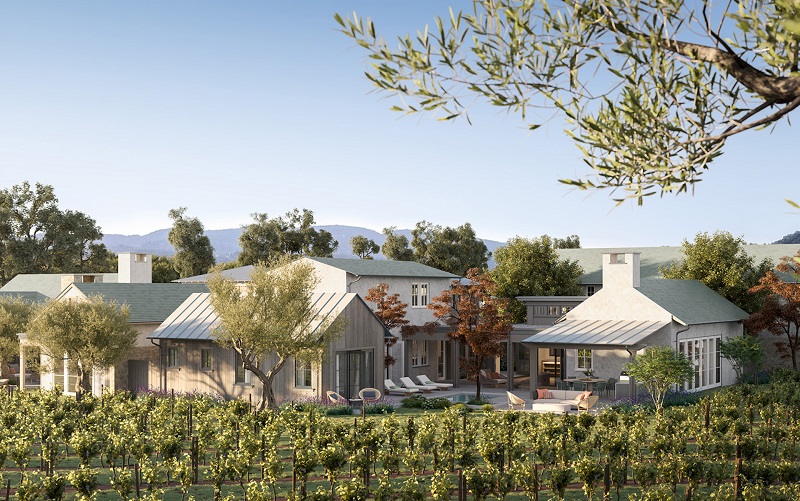
Stanly Ranch, Napa, California
Examples:
- WayWell community social activities app used at Côta Vera, Chula Vista, California
- Wine Country wellness programs at Stanly Ranch, Napa, California
- The Artisan Club at Cotino, Rancho Mirage, California
Trend Category: Fostering Fulfillment
Industry Topic: Master-Planned Communities
23 Selling Joy
Memory points are becoming more important. As homes are pared down further, builders need to set themselves apart, not through bells and whistles but with moments that inspire emotional whimsy.
Examples:
- Hideaway Spaces
- “Healing Escapism”
- “Gaudy Christmas”
Trend Category: Fostering Fulfillment
Industry Topic: Home Design
Trend 24: Barbenheimer IRL
This trend is labeled with an emerging portmanteau that meshes the movie titles “Barbie” and “Oppenheimer” that is used as convenient shorthand for polar opposites. When combined with the Internet slang term IRL (in real life), this trend implies that the home design industry is experiencing its own form of “polar opposites” in terms of color preferences.
Color-trend predictions are divided between “light and bright” and “dark and moody”, which underscores a larger trend toward “no rules” when it comes to design.
Purgula’s Take: When considering bold design options, we always recommend that homeowners keep flexibility in mind. For example, how easy will it be to “undo” a design aesthetic if your personal tastes change or if you need to resell your home sooner than expected? A terrific example of being bold with built-in flexibility is BlueStar® by Design, which was launched in 2021 to incorporate personalized colors and design images onto their luxury cooking appliances. The best part is that the most eclectic of design choices can be reverted back to all-stainless steel (for an additional charge), if a homeowner needs to mute their “statement kitchen” before putting their home on the market.
Trend Category: Fostering Fulfillment
Industry Topic: Home Design
The 24 Trends Grouped by Research Categories
This section groups the 2024 trends by primary research area:
Consumer Trends
We see the trends that were categorized under “Consumer” as largely confirming the following overarching needs of homebuyers and homeowners:
- Homeowners are needing to become more resourceful on keeping home expenses low and approaching major home improvement projects incrementally
- Homebuyers are placing a greater importance on feeling a positive and authentic connection to their homes’ immediate community and amenities
- Homebuyers are expecting the purchasing process to be powered by intuitive technology that assists their pursuit of a “personalized best-fit” that balances features, aesthetics and cost
NHTI’s 2024 Consumer Trends:
- 01 Tempered Splurges
- 05 The “Haves” Thrive
- 08 Mortgage Rate Smackdown
- 15 Relatability Rules
- 18 New Search
- 19 AI Raises The Personalization Bar
- NHTI Analyst: Mikaela Arroyo
Home Design Trends
We see the trends that were categorized under “Home Design” as largely addressing three key emerging consumer preferences:
- Prioritized functionality within smaller spaces to keep costs low
- Opportunities to monetize one’s home for attainability
- Design choices emphasizing home wellness and overall enjoyment over aesthetics
NHTI’s 2024 Home Design Trends:
- 07 From Simplifying to Completely Removing
- 09 ADUs – Beyond Multigenerational
- 13 Bells and Whistles Take a Back Seat
- 14 Rethinking the Kitchen Island
- 23 Selling Joy
- 24 Barbenheimer IRL
- NHTI Analyst: Jenni Nichols
Master-Planned Community Trends
We see the trends that were categorized under “Master-Planned Communities” as largely addressing the following emerging market changes and consumer preferences:
- Aging-In-Place homes within age-friendly communities for the growing population of aging homeowners
- Healthy homes and healthy living within safe, healthy communities
- More connections to nature: Indoor-Outdoor Living, Biophilic Design, Outdoor Amenities, Local Organic Food Sourcing (CSA)
- Tech-empowered communities with stronger social cohesiveness based on interest and values
- Amenity partnerships to improve community offerings, as well as subsidize operating costs through monetization partnerships
NHTI’s 2024 Master Plan Trends:
- 03 Land Crunch
- 10 Partnerships with Outside Entities
- 16 Welcome to Camp
- 17 Outdoor Recreation for All
- 21 “Blue Zone” Mentality
- 22 Shared Experience
- NHTI Analyst: Peter Dennehy
Building Products Trends
We see the trends that were categorized under “Building Products” as largely addressing the following key needs of homeowners:
- Durable and resilient materials that look great and are easier to maintain
- Technology that can make purchase decisions easier, smarter and personalized
- Incremental, scalable approaches to home improvement projects
- Safety and protection products to make homes more disaster resistant and able to counter rising insurance premiums and the risk of being “uninsurable”
NHTI’s 2024 Building Products Trends:
- 02 Projects in Smaller Portions
- 04 Resilient Design Gains a New Ally
- 06 Spec Level Finds a Floor
- 11 Home Builders Rethink Their Design Center Strategy
- 12 Easy-to-Install Materials Will Win
- 20 Product Innovation with Purpose
- NHTI Analyst: Deana Vidal
Trends Not Mentioned We Hope to See in the Future
After digesting this comprehensive list of intriuging housing trends, here’s our list of miscellaneous trends that we also hope will gain more exposure and adoption in the coming years:
- Transformable Design (make smaller spaces more functional & adaptable)
- Digital Twins (digital platforms for homeowners to manage their homes)
- Low-Maintenance Resilient Homes (prioritzing adaptable/scalable “good bones” over aesthetics)
- More Co-Homeownership Opportunties
- Advanced Auditory Privacy (e.g. double padded insulation in ADU rentals mentioned in Trend 09)
- Enhanced Visual Privacy (for smallers lots and multifamily structures)
- Zero Lot Homes (e.g. detached condos closer to urban centers)
- Enhanced Multifamily Design (e.g. improved visual & auditory privacy; more efficient operating costs; etc.)
- Community Monetization (e.g. wedding & winery venues mentioned in Trend 10)
- Experiential Retail Tactics Applied to New Home Models (“Try Before You Buy” opportunities)
- Community Buying Power
- Better, More Innovative HOAs
About The 24 for 2024 Trends Report & The New Home Trends Institute
About NHTI’s 24 for 2024 Trends Report
The 24 for 2024 Trends Report was published on December 7, 2023. The following sources were used as input to NHTI’s 24 for 2024 trends report:
- Qualified Remodeler; John Burns Research and Consulting, LLC (Data: 3Q23, Pub: Oct-23).
- Poll of attendees conducted during John Burns Research & Consulting, LLC’s 2024 Housing Market Outlook on November 7, 2023.
- 2023 US Residential Architecture & Design Survey conducted by the New Home Trends Institute by John Burns Research & Consulting, LLC and Pro Builder.
- NHTI & John Burns Research & Consulting, LLC, August–September 2023 survey of 1,364 homeowners and renters with household income of $50,000+
- John Burns Research & Consulting, LLC, independent survey of ~18% of all US new home sales, NSA (Data: Jan-23, Pub: Feb-23).
- John Burns Research and Consulting, LLC, independent survey of ~21% of all US new home sales, NSA (Data: Nov-23, Pub: Dec-23)
- 2023 US Residential Architecture & Design Survey conducted by the New Home Trends Institute by John Burns Research & Consulting, LLC and Pro Builder.
- New Home Trends Institute by John Burns Research & Consulting, LLC 2023 survey of 55 master-planned communities across the United States.
- NKBA’s 2024 Kitchen Trends Report
Analysts Who Contributed to the 24 for 2024 Trends Report:
- Mikaela Arroyo, Vice President & Chief of Staff, Consumer
- Peter Dennehy, Senior VP of Consulting, Master Plan
- Jenni Nichols, Vice President of Design, Home Design
- Deana Vidal, Senior Manager, Trend Consulting, Building Products
About The New Home Trends Institute

Backed by the research at John Burns Research and Consulting (JBREC) and support from experts across the United States, the mission of the New Home Trends Institute (NHTI) is to serve as a hub for research-fueled collaboration and innovation in housing. NHTI’s primary focus is to deliver insights to their member clients on the “why” behind consumer housing choices.
The research firm specializes in trend tracking and uses this information to seed housing innovation. A large portion of their work involves: monthly survey insights reports; webinars; and proprietary surveys consisting of feedback from builders, architects, designers, and other housing industry professionals.
The research organization is committed to helping their members stay on top of consumer and design trends through exclusive insights, networking opportunities, and collaborative partnerships.
Recommended Reading
- Secrets to Finding an Undervalued Home for Sale
- Is Co-Homeownership the New American Dream?
- 5 Trends Homeowners Should Know About the HVACR Industry
- Building Technologies for Disaster Resistant Homes
- 19 Home Products We Love from Design & Construction Week 2023
| Purgula is reader-supported. When you click on links to other sites from our website, we may earn affiliate commissions, at no cost to you. If you find our content to be helpful, this is an easy way for you to support our mission. Thanks! Learn more. |

